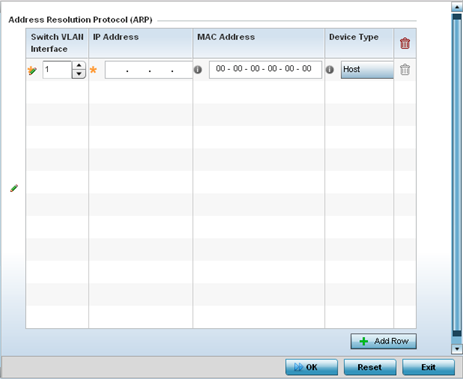Profile Overrides - ARP Configuration
About this task
ARP (Address Resolution Protocol) is a protocol for mapping an IP address to a hardware MAC address recognized on the network. ARP provides protocol rules for making this correlation and providing address conversion in both directions.
When an incoming packet destined for a host arrives, ARP is used to find a physical host or MAC address that matches the IP address. ARP looks in its ARP cache and, if it finds the address, provides it so the packet can be converted to the right packet length and format and sent to its destination. If no entry is found for the IP address, ARP broadcasts a request packet in a special format on the LAN to see if a device knows it has that IP address associated with it. A device that recognizes the IP address as its own returns a reply indicating it. ARP updates the ARP cache for future reference and then sends the packet to the MAC address that replied.
To configure or override ARP configuration:




